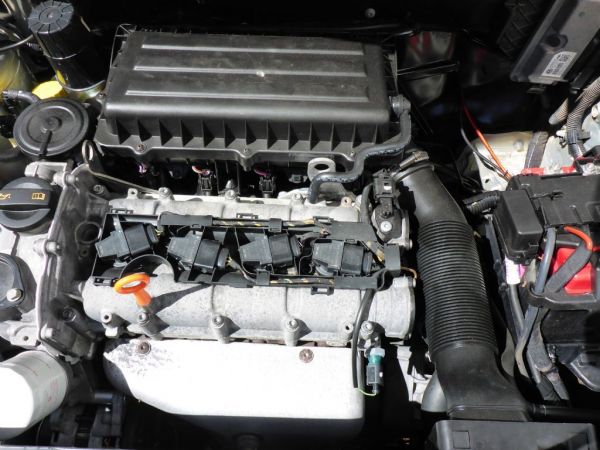Maintain consistent power with a high-performance clp engine.
Maintain consistent power with a high-performance clp engine.
Blog Article
Exactly How a Clp Engine Can Improve Performance in Numerous Industries
The development of CLP engines marks a significant change in operational efficiency throughout different industries, driven by their capability to enhance fuel consumption and minimize downtime. Industries such as production and logistics stand to get substantially from their robust layout and constant power outcome, which promise to simplify procedures and improve productivity. As companies increasingly focus on sustainability alongside performance, the role of CLP engines becomes much more vital. What remains to be seen is just how these developments will certainly form the future landscape of commercial operations and their influence on wider economic fads (clp engine).
Review of CLP Engines
CLP engines, or Continual Fluid Propellant engines, represent a significant advancement in propulsion modern technology, specifically for area applications. These engines use a continuous feed system that permits the sustained expulsion of propellant, bring about boosted effectiveness and performance contrasted to standard solid or hybrid propulsion systems. By keeping a continuous flow of fluid propellant, CLP engines can accomplish more specific drive control, which is important for maneuvering spacecraft in numerous objective circumstances.
The style of CLP engines integrates advanced products and innovative fuel monitoring systems. clp engine. This leads to reduced weight and raised dependability, important factors for long-duration room objectives. Moreover, the continuous procedure lessens the danger of combustion instability, a common obstacle in traditional rocket engines.

Benefits in Manufacturing
The production of Continual Fluid Propellant (CLP) engines presents several noteworthy advantages that enhance both efficiency and cost-effectiveness. One of the primary benefits is the structured manufacturing procedure, which minimizes the intricacy related to standard propulsion systems. By using liquid propellant, makers can accomplish higher precision in engine performance, resulting in enhanced energy result and lowered waste.
Furthermore, CLP engines assist in a higher level of modularity, permitting for much easier combination into various production lines. This versatility can significantly lower preparations and boost general operational flexibility. Making use of CLP modern technology additionally often tends to minimize the need for considerable upkeep as a result of fewer moving components, which translates right into lowered downtime and functional expenses.

Applications in Logistics
Leveraging Constant Fluid Propellant (CLP) engines in logistics uses substantial benefits in functional effectiveness and dependability. These engines supply a durable remedy for numerous transport demands, making it possible for the smooth activity of goods throughout huge ranges. The integral layout of CLP engines enables look what i found consistent power output, which translates into smoother and much more predictable transportation schedules.
One of the key applications of CLP engines in logistics remains in sturdy products transportation, where they can drive both ground and aerial cars. Their capability to maintain high performance under differing lots conditions makes sure that shipment timelines are satisfied, thus improving customer fulfillment. Furthermore, CLP engines can be integrated right into automated logistics systems, facilitating real-time monitoring and enhancing path planning.
Moreover, the toughness of CLP engines lowers upkeep downtime, enabling logistics business to maximize their functional capacities. This is especially helpful in warehousing procedures, where effectiveness in dealing with and transferring goods is crucial. As logistics remains to advance, the combination of CLP engines represents a forward-thinking strategy that not just enhances performance yet also sustains the sector's growing navigate to these guys needs for reliability and speed.
Influence on Energy Efficiency
Just How do Continuous Fluid Propellant (CLP) engines improve energy effectiveness in transport? CLP engines make use of a constant circulation of liquid gas, optimizing combustion procedures and maintaining a secure thrust outcome. This design decreases energy losses connected with traditional combustion engines, where gas delivery can vary and bring about ineffectiveness.
The continual operation of CLP engines permits a more effective thermal cycle, causing higher particular impulse contrasted to conventional engines. clp engine. This translates to minimized fuel intake for the same amount of job done, considerably decreasing operational expenses throughout numerous transportation industries, consisting of aeronautics and maritime sectors
Moreover, the capability of CLP engines to preserve optimum efficiency under varying lots problems lowers the need for frequent acceleration and deceleration, better enhancing gas efficiency. Enhanced power effectiveness not just contributes to cost savings but also click to read brings about reduce greenhouse gas discharges, straightening with worldwide sustainability objectives.
Future Trends and Innovations
Emerging developments in Constant Liquid Propellant (CLP) engine technology guarantee to revolutionize the landscape of transportation performance and sustainability. As sectors pivot towards greener options, CLP engines stand at the leading edge, integrating innovative products and layout methods that improve performance while minimizing ecological effect.
One of the most encouraging fads is the fostering of hybrid systems that combine CLP engines with renewable power sources. This synergy can maximize gas usage and minimize discharges, aligning with international sustainability objectives. Improvements in computational fluid dynamics (CFD) are facilitating the layout of even more aerodynamically efficient engines, leading to reduced drag and boosted gas effectiveness.
Moreover, the advancement of smart surveillance systems is readied to enhance operational performances. These systems take advantage of data analytics and IoT modern technology to enhance engine efficiency in real-time, guaranteeing that the engines run within their most effective criteria.
As research study remains to discover alternative propellant formulas-- such as biofuels and synthetic fuels-- the future of CLP engines looks promising. By using these advancements, industries can not only boost their efficiency yet also contribute dramatically to a cleaner, much more lasting future in transportation.
Final Thought
In verdict, CLP engines represent a substantial development in performance across numerous industries. Their capability to enhance gas intake and decrease functional prices, combined with a constant feed system, boosts power result and operational dependability. The assimilation of advanced materials and fewer moving components decreases maintenance needs, while placement with sustainability goals settings CLP engines as a crucial technology for the future. Continued development in this field guarantees additional improvements in effectiveness and ecological efficiency.
Report this page